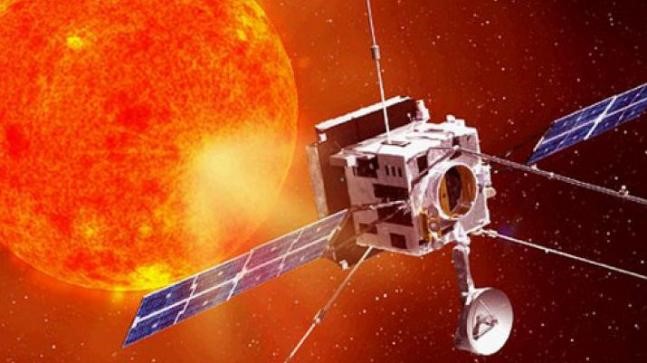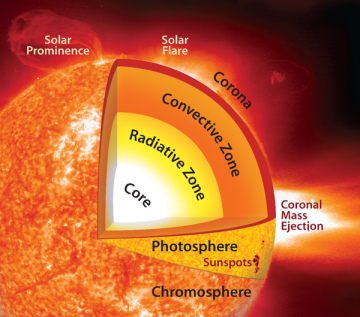CMEs and ADITYA L-1 MISSION

Disclaimer: No Copyright infringement intended.
Context
- A recent study has shown how conditions and events in the solar atmosphere like coronal mass ejections influence the accuracy of space weather prediction, which is crucial for the health of our satellites.
- This understanding will aid the interpretation of data from the upcoming Aditya-L1, India's first solar mission.




The coronal mass ejections (CMEs)
- The outer solar atmosphere, the corona, is structured by strong magnetic fields.
- Where these fields are closed, often above sunspot groups, the confined solar atmosphere can suddenly and violently release bubbles of gas and magnetic fields called coronal mass ejections.
- A large CME can contain a billion tons of matter that can be accelerated to several million miles per hour in a spectacular explosion. Solar material streams out through the interplanetary medium, impacting any planet or spacecraft in its path.
- CMEs are sometimes associated with flares but can occur independently.
- Thus, CME may occur that the twisted magnetic field holding up a prominence becomes unstable and rises up very suddenly and quickly.
- If that occurs, the material of the prominence could be released out of the Sun, reaching a speed of 1000 km/s.
- This is known as a CME.
- They sometimes happen at the same time as flares, but where the flare releases light, a coronal mass ejection releases material.
- They usually last several hours, until all the twisted magnetic field lines are finally broken and rearranged.
- These ejections release huge amount of matter and electromagnetic energy (EM radiation) when this occurs, and if the ejection is pointed at the Earth, in 2–5 days an intense flux of particles will arrive to Earth.
- The CME also brings twisted magnetic field with it, which can play a little with the magnetic field of the Earth, causing aurora and other effects.
Impact
- Coronal mass ejections, along with solar flares of other origin, can disrupt radio transmissions and cause damage to satellites and electrical transmission line facilities, resulting in potentially massive and long-lasting power outages.
About ADITYA L1 Mission
- The Aditya-1 mission was conceived as a 400kg class satellitecarrying one payload, the Visible Emission Line Coronagraph (VELC) and was planned to launch in a 800 km low earth orbit.
- A Satellite placed in the halo orbit around the Lagrangian point 1 (L1) of the Sun-Earth system has the major advantage of continuously viewing the Sunwithout any occultation/ eclipses.
- Therefore, the Aditya-1 mission has now been revised to “Aditya-L1 mission” and will be inserted in a halo orbit around the L1, which is 1.5 million km from the Earth.
- The satellite carries additional six payloads with enhanced science scope and objectives.
- Aditya-1 was meant to observe only the solar corona.
- The outer layers of the Sun, extending to thousands of km above the disc (photosphere) is termed as the corona.
- It has a temperature of more than a million degree Kelvin which is much higher than the solar disc temperature of around 6000K.
- How the corona gets heated to such high temperatures is still an unanswered question in solar physics.
- Aditya-L1 with additional experiments can now provide observations of Sun's Corona (soft and hard X-ray, Emission lines in the visible and NIR), Chromosphere (UV) and photosphere (broadband filters).
- In addition, particle payloads will study the particle flux emanating from the Sun and reaching the L1 orbit, and the magnetometer payload will measure the variation in magnetic field strength at the halo orbit around L1.
- These payloads have to be placed outside the interference from the Earth’s magnetic field and could not have been useful in the low earth orbit.



1.png)
